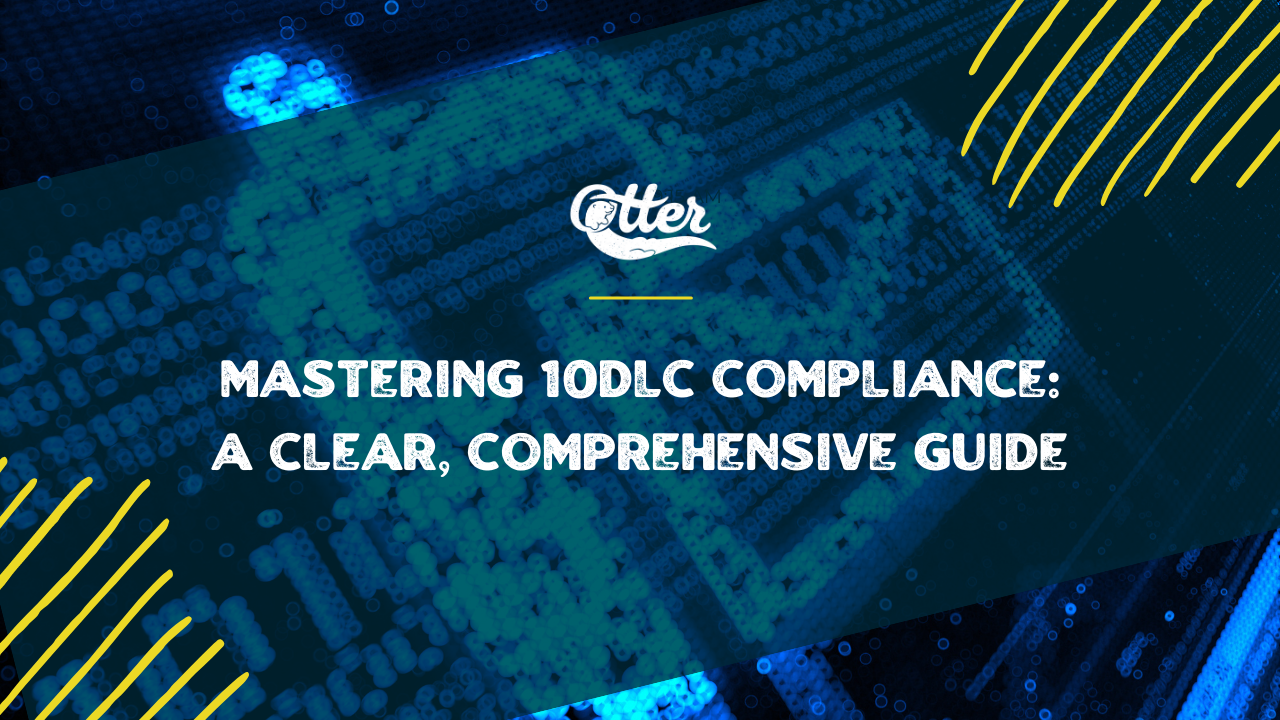As businesses increasingly rely on SMS marketing to connect with customers, understanding and adhering to 10DLC compliance becomes more crucial. This is particularly relevant for S.H.A.F.T. businesses (Sex, Hate, Alcohol, Firearms & Tobacco), which are often overlooked by SMS marketing platforms.
This guide will help businesses navigate 10DLC compliance. We’ll cover the importance of compliance, the registration process, essential rules and guidelines, and other considerations.
By mastering 10DLC compliance, businesses across diverse sectors can effectively use SMS marketing to enhance customer engagement, trust, and growth.
What is 10DLC compliance?
Origins of 10DLC
10DLC, or 10-digit local code, emerged as a response to the limitations of shared short codes (5- or 6-digit numbers used by multiple organizations), which became targets for SMS spammers. In 2019, wireless carriers introduced 10DLC services, enabling businesses to send messages from approved local numbers through SMS platforms such as OtterText.
Purpose of 10DLC Compliance
The primary goals of 10DLC compliance are to reduce spam, protect consumers from unwanted messages, and maintain the integrity of SMS marketing. By enforcing regulations for 10DLC numbers, carriers aim to ensure a better experience for both businesses and customers.
Benefits of Compliance for Businesses and Customers
For businesses, complying with 10DLC regulations offers several advantages:
- Improved deliverability: Ensures messages reach the intended recipients without being filtered or blocked by carriers.
- Avoiding carrier filtering or added fees: Non-compliant messages may be subject to carrier filtering or additional costs.
- Fostering customer trust: Compliance demonstrates a commitment to ethical communication practices, enhancing the reputation of the business.
For customers, 10DLC compliance provides a range of benefits:
- Fewer spam messages: Regulations reduce the volume of unsolicited and unwanted messages.
- Secure communication: Compliance standards help protect customers’ personal information and data.
- Reliable interaction: A compliant business is more likely to provide a consistent, trustworthy communication channel, resulting in a better overall experience for customers.
How To Register Your 10DLC?
OtterText simplifies the 10DLC registration process for you. Follow these steps to register your 10DLC number and ensure compliance:
Step 1: Sign Up with OtterText
Start the process by signing up for an account with OtterText. When you sign up, We will handle the registration of your business and 10DLC number with The Campaign Registry (TCR), the organization responsible for managing registration on behalf of wireless carriers.
Step 2: Provide Required Information for Registration
During the sign-up process, OtterText will ask you for the following information:
- Business Information:
- Legal name
- Company name (if different)
- Registered address
- The legal form of the organization
- Tax number/ID/EIN
- Website URL
- Stock symbol and stock exchange (if public)
- Industry
- Messaging Use Case: Specify the purpose for which the 10DLC number will be used (e.g., 2FA, account notifications, customer care, delivery notifications, marketing, etc.). Note that special use cases, such as charity or emergency services, may have additional requirements and fees.
- Example Text Message: Provide an example of a message that will be sent to contacts, which gives TCR an idea of what recipients can expect from the business. For inspiration, here are 20 free text message samples for Shooting Ranges and 5 for Happy Hour invitations at Your Restaurant.
Step 3: OtterText Submits Your Information to TCR
After you provide the required information, OtterText will submit it to TCR for review and approval. The timeline for approval varies, but typically, it only takes a few minutes to be approved.
Step 4: Start Sending Messages
Upon approval, you can start sending messages through your registered 10DLC number without worrying about carrier filtering or added fees. By completing the registration process with OtterText, you ensure that your business is compliant with 10DLC regulations and can effectively utilize SMS marketing to reach your customers.
What Are The Key Rules and Guidelines for 10DLC Compliance?
To ensure compliance with 10DLC regulations, businesses must follow these key rules and guidelines when sending messages from a registered 10DLC number:
A. Obtaining Written Consent
Always obtain written consent from individuals before sending commercial messages to them through an SMS platform, even if you’ve already collected their information for another purpose. This is required by the Telephone Consumer Protection Act (TCPA).
For non-commercial, informational texts (e.g., from tax-exempt non-profit organizations, political purposes, or other non-commercial purposes like school closings), prior express consent is required, but it doesn’t necessarily need to be written.
B. Avoiding Copyrighted Materials
Do not send copyrighted or trademarked material in your messages that have not been licensed for your use. The unauthorized use of such materials could lead to legal issues and penalties.
C. Adhering to Messaging Guidelines
When sending messages, follow the specific guidelines set forth by industry organizations, mobile carriers, and U.S. governing bodies. These rules are designed to protect consumers and prevent spammers and scammers from misusing the SMS channel.
Some general guidelines include:
- Never buy lists of phone numbers and add them as contacts.
- Include information in the confirmation message about whether the consumer is agreeing to a single-message response or a recurring-messages campaign after they opt into your SMS list.
- You can only send messages related to alcohol to age-verified contacts.
- Do not send confidential information, threats of violence, hate speech, or graphic violence.
Frequently Asked Questions
If I don’t register for 10DLC, what are the consequences?
Failure to register for 10DLC may result in carriers filtering or blocking your messages and applying additional fees. In the future, unregistered businesses using long codes to send messages to the U.S. might be prohibited altogether.
Firearm brands, however, are an exception. They can sign up for an OtterText account and launch SMS campaigns using 10DLC without registering.
What distinguishes A2P from 10DLC?
10DLC refers to a 10-digit long code specifically designed for application-to-person (A2P) texting in North America. The main difference between a regular 10-digit phone number and an A2P-10DLC is that the latter is intended for application-based business messaging.
Is it possible to register my 10DLC number directly with The Campaign Registry?
We advise against registering your number directly with The Campaign Registry, as doing so would prevent you from using your number with OtterText. Our team can handle the entire registration process on your behalf.
If I only send messages to contacts in Canada, do I need to verify my number?
No, Canadian mobile carriers currently do not mandate registration for local numbers.
Which businesses are required to register for 10DLC?
A: Businesses that send SMS messages to individuals in the U.S. using a 10-digit local number must register with The Campaign Registry.
Are there higher network fees for unregistered traffic on Otter?
Yes. AT&T increased their fee for non-registered accounts by 4x. Otter includes carrier fees in our pricing for registered accounts and non-registered will see a separate charge for carrier fees that are increased from the regular rate for registered campaigns.



